Modern Egypt
Modern Egypt The Neo-Mamluk Beylicate, 1760-98 Most scholars of Egyptian history now agree that the political and economic changes that occurred in the early nineteenth century had their origins not in the French invasion of 1798 but rather in events that occurred in Egypt itself in the latter half of the eighteenth century.
At that time, political and military power was consolidated in the hands of the Mamluk Ali Bey al Kabir (1760-66) and his successor, Muhammad Bey Abu adh Dhahab (1772-75).
Before 1760 a balance of power and separate spheres of influence were maintained by the Mamluk beylicate, which controlled the civil administration and derived its revenues from the rural tax farms, and by the Mamluks, who dominated the military and derived their revenues from the urban tax farms and the customs house.

In 1760 Ali Bey gained control of the military and drove the sultan’s governor from the country. He issued firmans (decrees) in his own name, redirected the state revenues to his own use, and attempted to recreate the medieval amluk empire by invading Syria.
In addition, Ali Bey tried to strengthen commercial ties with Europe by encouraging trade and attempting to open the Port of Suez to European shipping.
Ali Bey ruled only briefly, but his successors, especially Muhammad Bey, continued his policies. These two beys effectively eliminated Ottoman control and repositioned Egypt at the center of a newly emerging network of international relationships that embraced the lands of the eastern Mediterranean, the Red Sea coasts, and Europe.
Thus, Napoleon Bonaparte Modern Egypt
did not “open” an isolated Egypt to the West, nor was Muhammad Ali Pasha in the nineteenth century the originator of the policies responsible for Egypt’s transformation.
Only Ali Bey’s dramatic expulsion from the country and Muhammad Bey’s premature death of a fever prevented them from using the authority they acquired to carry on those policies that are associated with Egypt’s revival in the nineteenth century.
The French Invasion and Occupation, 1798-1801
After the death of Muhammad Bey, there was a decade-long struggle for dominance among the beys.
Eventually Ibrahim Bey and Murad Bey succeeded in asserting their authority and shared power in Egypt.
Their dominance in the country survived an unsuccessful attempt by the Ottomans to reestablish the empire’s control (1786-91).
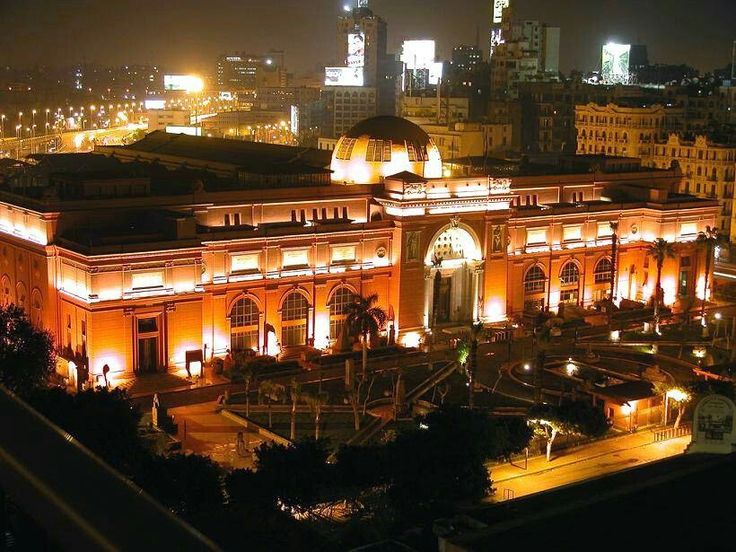
The two continued in power until the French invasion in 1798.
In addition to the upheavals caused by the Ottoman-Mamluk clashes, waves of famine and plague hit Egypt between 1784 and 1792.
Thus, Cairo was a devastated city and Egypt an impoverished country when the French arrived in 1798.
On July 1, 1798, a French invasion Modern Egypt
force under the command of Napoleon disembarked near Alexandria.
The invasion force, which had sailed from Toulon on May 19, was accompanied by a commission of scholars and scientists whose function was to investigate every aspect of life in ancient and contemporary Egypt.
France wanted control of Egypt for two major reasons–its commercial and agricultural potential and its strategic importance to the Anglo-French rivalry.
During the eighteenth century, the principal share of European trade with Egypt was handled by French merchants.
The French also looked to Egypt as a source of grain and raw materials.
In strategic terms, French control of Egypt could be used to threaten British commercial interests in the region and to block Britain’s overland route to India.
The French forces took Alexandria without difficulty, defeated the Mamluk army at Shubra Khit and Imbabah, and entered Cairo on July 25. Murad Bey fled to Upper Egypt while Ibrahim Bey and the Ottoman viceroy went to Syria.
Mamluk rule in Egypt collapsed. Modern Egypt
Nevertheless, Napoleon’s position in Egypt was precarious. The French controlled only the Delta and Cairo; Upper Egypt was the preserve of the Mamluks and the bedouins.
In addition, Britain and the Ottoman government joined forces in an attempt to defeat Napoleon and drive him out of Egypt.
On August 1, 1798, the British fleet under Lord Nelson annihilated the French ships as they lay at anchor at Abu Qir, thus isolating Napoleon’s forces in Egypt. September 11, Sultan Selim III declared war on France.
OOctober 21, the people of Cairo rioted against the French, whom they regarded as occupying strangers, not as liberators.
The rebellion had a religious as well as a national character and centered around Al Azhar mosque. Its leaders were the ulama, religiously trained scholars, whom Napoleon had tried to woo to the French side.
During this period, the populace began to regard the ulama not only as moral but also as political leaders.
To forestall an Ottoman invasion, Napoleon invaded Syria, but, unable to take Acre in Palestine, his forces retreated on May 20, 1799.
On August 22, Napoleon, with a very small company, secretly left Egypt for France, leaving his troops behind and General Jean-Baptiste Kléber as his successor.
Kléber found himself the unwilling commander in chief of a dispirited army with a bankrupt treasury.
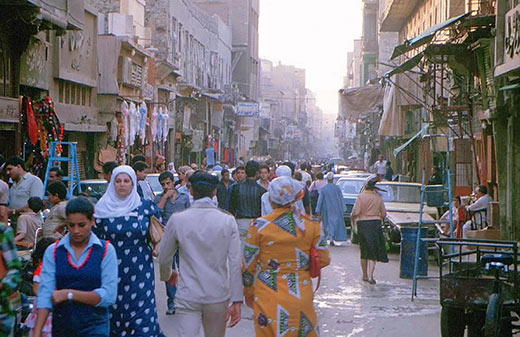
His main preoccupation was to secure the evacuation of his troops to France.
When Britain rejected the evacuation plan, Kléber was forced to fight.
After Kléber’s assassination by a Syrian, his command was taken over by General Abdullah Jacques Menou, a French convert to Islam.
The occupation was finally terminated by an Anglo-Ottoman invasion force.
The French forces in Cairo surrendered on June 18, 1801, and Menou himself surrendered at Alexandria on September 3.
By the end of September, the last French forces had left the country.
As historian Afaf Lutfi al-Sayyid Marsot has written, the three-year French occupation was too short to exert any lasting effects on Egypt, despite claims to the contrary.
Its most important effect on Egypt internally was the rapid decline in the power of the Mamluks. The major impact of the French invasion was the effect it had on Europe.
Napoleon’s invasion revealed the Middle East as an area of immense strategic importance to the European powers, thus inaugurating the Anglo-French rivalry for influence in the region and bringing the British into the Mediterranean.
The French invasion of Egypt also had an important effect on France because of the publication of Description de l’Egypte, which detailed the findings of the scholars and scientists who had accompanied Napoleon to Egypt.
This publication became the foundation of modern research into the history, society, and economics of Egypt.
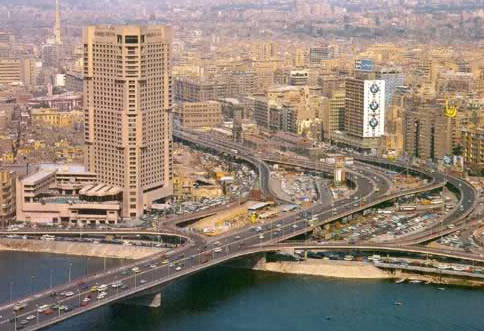
Muhammad Ali, 1805-48 After the French left Egypt, an Ottoman army remained in the country.
The Ottoman government was determined to prevent a revival of Mamluk power and autonomy and to bring Egypt under the control of the central government.
The Ottomans appointed Khusraw Pasha as viceroy. Modern Egypt
Hostilities occasionally broke out between his forces and those of the Mamluks who had established themselves in Upper Egypt.
By 1803 it was apparent that a third party had emerged in the struggle for power in Egypt.
This was the Albanian contingent of Ottoman forces that had come in 1801 to fight against the French.
Muhammad Ali, who had arrived in Egypt as a junior commander in the Albanian forces, had by 1803 risen to commander.
In just two short years, he would become the Ottoman viceroy in Egypt.
Muhammad Ali, who has been called the “father of modern Egypt,” was able to attain control of Egypt because of his own leadership abilities and political shrewdness but also because the country seemed to be slipping into anarchy.
The urban notables and the ulama believed that Muhammad Ali was the only leader capable of bringing order and security to the country.
The Ottoman government, however, aware of the threat Muhammad Ali represented to the central authority, attempted to get rid of him by making him governor of the Hijaz.
Eventually, the Ottomans capitulated to Egyptian pressure, and in June 1805, they appointed Muhammad Ali governor of Egypt.
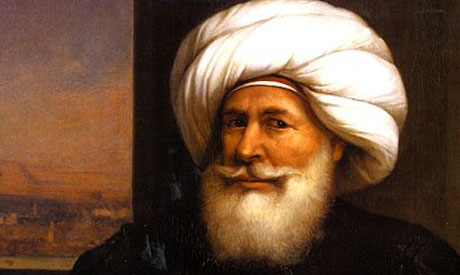
Between 1805 and 1811, Muhammad Ali consolidated his position in Egypt by defeating the Mamluks and bringing Upper Egypt under his control.
Finally, in March 1811, Muhammad Ali had sixty-four Mamluks, including twenty-four beys, assassinated in the citadel.
From then on, Muhammad Ali was the sole ruler of Egypt. Modern Egypt
Muhammad Ali represented the successful continuation of policies begun by the Mamluk Ali Bey al Kabir. Like Ali Bey, Muhammad Ali had great ambitions.
He, too, wanted to detach Egypt from the Ottoman Empire, and he realized that to do so Egypt had to be strong economically and militarily.
Muhammad Ali’s development strategy was based on agriculture.
He expanded the area under cultivation and planted crops specifically for export, such as long-staple cotton, rice, indigo, and sugarcane.
The surplus income from agricultural production was used for public works, such as irrigation, canals, dams, and barrages, and to finance industrial development and the military.
The development plans hinged on the state’s gaining a monopoly over the country’s agricultural resources.
In practical terms, this meant the peasants were told what crops to plant, in what quantity, and over what area.
The government bought directly from the peasants and sold directly to the buyer, cutting out the intermediaries or merchants.
Muhammad Ali was also committed to the industrial development of Egypt.
The government set up modern factories for weaving cotton, jute, silk, and wool.
Workers were drafted into factories to weave on government looms.
Factories for sugar, indigo, glass, and tanning were set up with the assistance of foreign advisers and imported machinery.
Industries employed about 4 percent of the population, or between 180,000 and 200,000 persons fifteen years of age and over.
The textile industry was protected by embargoes imposed by the government to prohibit the import of the cheap British textiles that had flooded the Egyptian market.
Commercial activities were geared toward the establishment of foreign trade monopolies and an attempt to acquire a favorable balance of trade.
The historian Marsot has argued that Britain became determined to check Muhammad Ali because a strong Egypt represented a threat to Britain’s economic and strategic interests.
Economically, British interests would be served as long as Egypt continued to produce raw cotton for the textile mills of Lancashire and to import finished goods from Britain.
Thus, the British and also the French were particularly angered by the Egyptian monopolies even though Britain and France engaged in such trade practices as high tariffs and embargoes to protect their own economies.
Strategically, Britain wanted to maintain access to the overland route through Egypt to India, a vital link in the line of imperial communications.
Britain was worried not only about the establishment of a united, militarily strong state straddling the eastern Mediterranean but also about Muhammad Ali’s close ties to France.
It was at this time that Lord Palmerston, the British minister of foreign affairs, established the British policy, which lasted until the outbreak of World War I, of preserving the integrity of the Ottoman Empire.
Britain preferred a weakened but intact Ottoman Empire
that would grant it the strategic and commercial advantages it needed to maintain its influence in the region.
Thus, Muhammad Ali’s invasion of Syria in 1831 Modern Egypt
and his attempt to break away from the Ottoman Empire jeopardized British policy and its military and commercial interests in the Middle East and India.
The Egyptian invasion of Syria was provoked ostensibly by the sultan’s refusal to give Syria and Morea (Peloponnesus) to Muhammad Ali in return for his assistance in opposing the Greek war for independence in the late 1820s.
This resulted in Turkey and Egypt being forced out of the eastern Mediterranean by the destruction of their combined naval strength at Navarino on the southern coast of Greece.
When Egyptian forces invaded and occupied Syria and came within sight of Istanbul, the great powers (Britain, France, Austria, Russia, and Prussia) allied themselves with the Ottoman government to drive the Egyptian forces out of Syria.
A British fleet bombarded Beirut in September 1840,
and an Anglo-Turkish force landed, causing uprisings against the Egyptian forces.
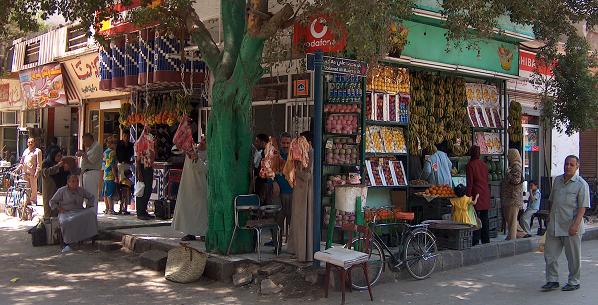
Acre fell in November, and a British naval force anchored off Alexandria.
The Egyptian army was forced to retreat to Egypt, and Muhammad Ali was obliged to accede to British demands.
According to the Treaty of 1841, Muhammad Ali was stripped of all the conquered territory except Sudan but was granted the hereditary governorship of Egypt for life, with succession going to the eldest male in the family.
Muhammad Ali was also compelled to agree to the Anglo-Ottoman Convention of 1838, which established “free trade” in Egypt.
This meant that Muhammad Ali was forced to abandon his monopolies and establish new tariffs that were favorable to imports.
Thus, Egypt was unable to control the flood of cheap manufactured imports that decimated local industries.
Muhammad Ali continued to rule Egypt after his defeat in Syria. Modern Egypt
He became increasingly senile toward the end of his rule and his eldest son, Ibrahim, petitioned the Ottoman government to be appointed governor because of his father’s inability to rule.
Ibrahim was gravely ill of tuberculosis, however, and ruled for only six months, from July to November 1848. Muhammad Ali died in August 1849.
Abbas Hilmi I, 1848-54 and Said, Modern Egypt
1854-63 Ibrahim was succeeded by Abbas Hilmi I, a genuine traditionalist with no interest in continuing the development plans of his grandfather, Muhammad Ali.
Abbas disliked Europeans, but he allowed a railroad line to be built between Alexandria and Cairo that facilitated British imperial communications with India.
Regular steamship services already linked Britain to India via Alexandria, Suez, and Bombay.
This partially overland route to India took thirty-one days, compared to three months for the journey around the Cape of Good Hope. Abbas’s successor was Said, the fourth son of Muhammad Ali.
He revived the works in agriculture, irrigation, and education begun by his father. Under his rule, the first land law governing private landed property in Egypt was passed in 1858.
Said abolished the agricultural monopolies of his father by granting landowners the right to dispose freely of their produce as well as the freedom to choose what crops to cultivate.
He also introduced uniform military service and the first organized pension plan for public servants.
Said was a friend of the French engineer Ferdinand de Lesseps, to whom he granted a concession in 1854 to construct a canal from the Red Sea to the Mediterranean.
The Suez Canal Modern Egypt
Company was organized to undertake the construction, and the concession to the company included two items that proved costly for Egypt. First, the company was granted a strip of land linking the Nile with the canal site. There a freshwater canal was constructed, and the strip of land was decreed tax free, allowing the company to enjoy the benefits of its cultivation. Second, the viceroy undertook to supply labor for the canal’s construction, in what amounted to a system of forced labor (see Suez Canal , ch. 3).
Social Change in the Nineteenth Century During the nineteenth century, the socioeconomic and political foundations of the modern Egyptian state were laid.
The transformation of Egypt began with the integration of the economy into the world capitalist system with the result that by the end of the century Egypt had become an exporter of raw materials to Europe and an importer of European manufactured goods.
The transformation of Egypt led to the emergence of a ruling elite composed of large landowners of Turco-Circassian origin and the creation of a class of medium-sized landowners of Egyptian origin who played an increasingly important role in the political and economic life of the country. In the countryside, peasants were dispossessed because of debt, and many landless peasants migrated to the cities where they joined the swelling ranks of the underand unemployed.
In the cities, a professional middle class emerged composed of civil servants, lawyers, teachers, and technicians.
Finally, Western ideas and cultural forms were introduced into the country. Rural Society Muhammad Ali had attempted to take Egypt directly from a subsistence agricultural economy to a complex industrial one.
He failed because of internal weaknesses and European pressures. Ironically, Muhammad Ali, whose goal was to make Egypt economically and politically independent of Europe, set the country on the path to economic dependence and foreign domination.
In the industrial sector, Muhammad Ali’s factories did not last past his death. In the agricultural sector, Egypt’s longstaple cotton became increasingly attractive to British textile manufacturers. Between 1840 and 1860, the export of cotton increased 300 percent.
During the American Civil War, Modern Egypt
the area devoted to cotton cultivation in Egypt increased almost fourfold and cotton prices rose along with cotton production.
The transformation of the rural economy from subsistence to cash-crop agriculture caused dramatic changes, including the privatization of land in fewer hands and the dispossession of peasants.
The privatization of land began during the reign of Muhammad Ali, who in the 1840s distributed half the agricultural land to royal family members, Turco-Circassian officials, and Egyptian notables or village headmen.
Although many land grants were rescinded during the reign of Abbas, consolidation of landholdings proceeded during the reigns of Said and Ismail at the expense of small and middle-sized peasant proprietors.
By the 1870s, the royal family owned one-fifth of all the cultivated land in the country. The largest royal estates could be as large as 10,000 feddans (a feddan is slightly more than an acre–see Glossary).
By the 1890s, 42.5 percent of all registered land was held in tracts of more than fifty feddans. The largest landowners included members of the royal family, and the Turco-Circassian elite of officers and officials.
Their estates were worked by sharecroppers or agricultural laborers. By the time of Ismail, these landowners had developed into a landed aristocracy.
Another group of landholding elite originated with Muhammad Ali’s appointment of Egyptians as village headmen (umada; sing., umdah), the state’s agents in the countryside.
This was Muhammad Ali’s attempt to reduce the power of the Turco-Circassians.
With the privatization of land, the Egyptian notables became substantial landowners with considerable political influence.
Historian Judith Tucker has described the nineteenth century as a time when the peasants were transformed from independent producers with rights to use the land to landless peasants forced to work as wage-laborers or to migrate to the cities where they became part of the urban dispossessed.
The development of capitalist agriculture and a monetized rural economy spelled disaster for many peasants.
Despite land laws like those of Said in 1855 and 1858, which gave peasants legal ownership of their plots, peasant land loss occurred at an unprecedented rate, chiefly because of indebtedness. Forced to borrow at high rates of interest to get the seed and animals necessary for sowing and to pay monthly installments on their taxes, the peasants had to repay these loans at harvest time when the prices were lowest.
The American Civil War
put a premium on Egyptian cotton, and the price increased. When the war ended, the inflated prices suddenly dropped.
For the first time in Egypt, a serious problem of peasant indebtedness appeared with its inevitable consequences: mortgages, foreclosures, and usurious loans.
The village headmen and the owners of great estates profited from the crisis by purchasing abandoned land.
The headmen also profited as moneylenders. Peasants also lost land because taxes on peasant land were higher than on estate land.
Large landholders sometimes paid as little as one-fourth of the taxes paid by the peasantry. In addition, peasants fled the countryside to escape corvée (forced labor) on the state’s public works projects and military conscription.
At the turn of the century, the population of Egypt was about 10 million.
Of this total, between 10 and 20 percent were landless peasants.
In 1906 less than 20 percent of the privately held and waqf (religiously endowed) land was held by 80 percent of the population while 1 percent owned more than 40 percent.
Most landowners owned between one and five feddans, with three feddans being necessary for subsistence.
FROM AUTONOMY TO OCCUPATION: Modern Egypt
ISMAIL, TAWFIQ, AND THE URABI REVOLT Khedive Ismail, 1863-79 No ruler of Egypt, except Gamal Abdul Nasser, has provoked such controversy in the West as Ismail.
At the time, the antiIsmail view was held mainly by British administrators like Evelyn Baring (Lord Cromer) and Lord Alfred Milner, who depicted him as squeezing the peasants for money by oppressive taxation and the whip, and “ruining Egypt” by his lavish spending and despotic ways.
Journalists and the American consuls in Egypt such as Edwin de Leon held a more balanced view, arguing that Ismail inherited an unfavorable Suez Canal agreement and a significant public and private debt from his uncle, Said.
They noted that although Ismail spent lavishly, much of the money he borrowed from European bankers was used for building or repairing the country’s infrastructure.
They also pointed out that European bankers and financiers loaned money to Egypt at usurious interest rates and, when it seemed Egypt would be unable to repay the loans, urged their governments to intervene to protect their interests.
Ismail’s goals for Egypt were similar to those of his grandfather, Muhammad Ali. Modern Egypt
He wanted Egypt to become virtually independent of the Ottoman Empire, a political and military power in the eastern Mediterranean and an economic partner of Europe.
Ismail achieved a considerable degree of independence from the Porte (from Sublime Porte, the term for the High Gate that came to be synonymous with the Ottoman government) by making large payments to the Ottoman treasury.
For example, in return for increasing Egypt’s annual payment to the Ottoman treasury from £175,000 to £400,000, Sultan Abdul Aziz allowed Ismail to change the rule of succession from the oldest surviving male heir of Muhammad Ali to direct male primogeniture in his family.
The sultan also granted Ismail the formal title of khedive, which elevated his standing to a position closer to royalty. Ismail’s attempt to make Egypt independent foundered eventually because of the gap between the revenues the country could produce and the expenses necessary to achieve his goals.
He attempted to generate more income by increasing agricultural productivity, chiefly by bringing more land into cultivation through expensive irrigation projects such as the construction of canals and dams.
During his reign, an additional 506,000 hectares were brought under cultivation, representing a sizeable increase in both production and income.
To service the cotton crop, which was the basis of Egypt’s prosperity, roads, bridges, railways, harbors, and telegraph lines had to be constructed. During Ismail’s reign, 112 canals, 13,440 kilometers long, were dug; 400 bridges were built; 480 kilometers of railroad lines were laid; and 8,000 kilometers of telegraph lines were erected.
Towns and cities were modernized by the expansion of public services such as water distribution, transport, street lighting, and gas supply.
Public education was reorganized and expanded, and a postal service was established. The army and bureaucracy were expanded and modernized.
In short, Ismail undertook the construction of the infrastructure of a modern state. Ismail greatly expanded Egypt’s revenues and exports during his reign.
But the country’s prosperity was tied to the export of cotton, whose price was set on a fluctuating world market, making income uncertain. Moreover, Ismail’s infrastructure development entailed more expenditure than Egypt’s income could provide, with the result that he was obliged to contract foreign loans.
These loans, added to the expensive concessions that Said had made concerning the Suez Canal, meant that by 1875 Egypt was £100 million in debt.
In that year, Ismail sold his shares in the Suez Canal Company, making the British government overnight the single largest shareholder in the company.
The sale of Ismail’s shares did not solve the country’s financial problems, however, but merely staved off the crisis for another year.
From Intervention to Occupation, 1876-82 Seriously concerned with the country’s financial situation, Ismail asked for British help in fiscal reform. Britain responded by sending Steven Cave, a member of Parliament, to investigate.
Cave judged Egypt to be solvent on the basis of its resources and said that all the country needed to get back on its feet was time and the proper servicing of the debts.
Cave recommended the establishment of a control commission over Egypt’s finances to approve all future loans.
European creditors, however, would not allow Egypt time.
When Ismail suspended payment of interest on the loans in 1875, his creditors in Britain and France appointed two men to represent their interests and negotiate new arrangements with the khedive.
The Goschen-Joubert Mission achieved three things: the consolidation of the debt; the appointment of two European controllers, one British and one French; and the establishment of the Caisse de la Dette Publique, a special department with representatives from the various European creditor states to ensure the service of the debt.
Revenue from the most productive provinces went straight to the department, and by 1877 more than 60 percent of all Egyptian revenue went to service the national debt.
Although Egypt serviced the debt faithfully, European intervention increased.
At the insistence of the French, a commission of inquiry was appointed in 1878 to examine all sources of revenue and expenditure. The commission had the right to ask any Egyptian official or government deputy to testify before it and to subpoena all records.
Such powers implied the dilution of Egyptian sovereignty by Europeans. Modern Egypt
The commission report indicted the khedival government and suggested limiting Ismail’s power as a first step in solving the country’s financial problems.
The khedive accepted the commission’s conditions, including a cabinet containing Europeans and the principle of ministerial responsibility.
He appointed Nubar Pasha as prime minister and asked him to form a government containing two Europeans.
Many Europeans were appointed at high salaries in various government departments; thirty British officers were appointed to the Land Survey Department alone.
Ismail was also forced to delegate governmental responsibility to his cabinet, which was made independent of the khedive and responsible for the administration of the country. Opposition to European intervention in Egypt’s internal affairs emerged from the Assembly of Delegates, which Ismail had created in 1866, and from the Egyptian army officers.
The assembly, composed mainly of Egyptian notables, had no legislative power.
It was Ismail’s attempt to associate the Egyptian notables with his financial policies, and thus, to demonstrate support for his taxes and foreign loans.
The presence of Egyptian officers in the army resulted from the 1854 decree of Said, who ordered the sons of village notables to join the army.
Said allowed them to be trained as officers and to rise to the rank of colonel, but the top posts in the army continued to be held by members of the Turco-Circassian elite.
The Assembly of Delegates, meeting between January and July 1879, demanded more control over financial matters and accountability of the European ministers to the assembly.
At the same time, a group of Egyptian army officers who opposed the mixed cabinet protested the placing of 2,500 officers on half- pay.
A group of army officers marched on the Ministry of Finance and occupied the building. Only the personal intervention of the khedive, who was suspected of instigating the incident, saved the situation.
At this point, Ismail realized that he could use both the assembly and the army officers to rid himself of foreign control. In April 1879, Ismail’s opportunity came.
Under foreign pressure, Ismail ordered the assembly to dissolve.
Its members refused, saying they represented the nation and would not relinquish their mandate at the order of the khedive, influenced and pressured as he was by foreign powers.
On March 29, they presented a manifesto to the khedive protesting the Council of Ministers’ attempts to usurp their power and authority.
They also stated their determination to reject the European ministers’ demand that Egypt declare itself bankrupt.
The leader of the delegates was the constitutionally minded Muhammad Sharif Pasha, who was among the members of a secret society called the National Society (later the Hulwan Society).
The society had drawn up a plan for national reform (Laiha Wataniyah) that proposed constitutional and financial reforms to increase the power of the assembly and resolve Egypt’s financial problems without foreign advisers or control.
In a shrewd political move, Ismail summoned the European consuls and confronted them with the discontent of the delegates, the disaffection in the army, and the general public uneasiness.
He informed them that he had decided to act in accordance with the resolutions of the assembly. Therefore, he rejected the proposal to declare Egypt bankrupt and stated his intent to meet all obligations to Egypt’s creditors.
He also invited Sharif Pasha to form a government. Sharif Pasha and his Egyptian cabinet dismissed the European ministers.
Although these actions made Ismail popular at home, they threatened continued European control over Egypt’s finances.
The European powers, particularly Britain and France, decided Ismail had to go.
Since he refused to abdicate, the European powers put pressure on the Ottoman sultan to dismiss him in favor of his son Tawfiq.
On June 26, 1879, he received a telegram from the grand vizier addressed to “the ex-khedive Ismail.” Ismail left Egypt for exile in Naples and subsequently in Istanbul, where he died in 1895. Tawfiq proved to be a more pliable instrument in the hands of the European powers.
The dual control of Egypt’s finances was re instituted.
An international commission of liquidation was appointed with British, French, Austrian, and Italian members.
In July 1880, the Law of Liquidation was promulgated, limiting Egypt to 50 percent of its total revenues.
The rest went to the Caisse de la Dette Publique to service the debt.
The Assembly of Delegates remained dissolved.
The direct interference of Europeans in Egypt’s affairs and the deposition of Khedive Ismail forged a nationalist movement composed of Egyptian landowners and merchants, especially former members of the assembly, Egyptian army officers, and the intelligentsia, including the ulama and Muslim reformers.
A secret society of Egyptian army officers had also come into existence in 1876, comparable to the secret society of Egyptian notables.
The army society included Colonel Ahmad Urabi, who would become the leader of the nationalist movement, and colonels Ali Fahmi and Abd al Al Hilmi. In 1881 a link, if not a merger, was formed between the Urabists and the National Society.
This expanded group took the name Al Hizb al Watani al Ahli, the National Popular Party. Beginning in 1881, the army officers demonstrated their strength and their ability to intimidate the khedive.
They began with a mutiny provoked by the anti-Urabist minister of war.
Not only were they able to force the appointment of a more sympathetic minister but by January 1882, Urabi joined the government as undersecretary for war.
These developments alarmed the European powers, particularly Britain and France. Britain was especially concerned about protecting the Suez Canal and the British lifeline to India.
In January 1882, Britain and France sent a joint note declaring their support for the khedive.
The note had the opposite effect from that intended, producing an upsurge in anti-European feeling, a shift in leadership of the nationalist movement from the moderates in the assembly to the military, and the formation of a new government with Urabi as minister of war.
At this point, the goal of Urabi and his followers became not only the removal of all European influence from Egypt but also the overthrow of the khedive.
In another attempt to break Urabi’s power, the British and French agreed on a joint show of naval strength.
They also issued a series of demands including the resignation of the government, the temporary exile of Urabi, and the internal exile of his two closest associates, Ali Fahmi and Abd al Al Hilmi. As a result, violent anti-European riots broke out in Alexandria with considerable loss of life on both sides.
During the summer, an international conference of the European powers met in Istanbul, but no agreement was reached.
The Ottoman sultan Abdul Hamid boycotted the conference and refused to send troops to Egypt.
Eventually, Britain decided to act alone.
The French withdrew their naval squadron from Alexandria, and in July 1882, the British fleet began bombarding Alexandria.
Following the burning of Alexandria and its occupation by British marines, the British installed the khedive in the Ras at Tin Palace.
The khedive obligingly declared Urabi a rebel and deprived him of his political rights.
Urabi in turn obtained a religious ruling, a fatwa, signed by three Al Azhar shaykhs, deposing Tawfiq as a traitor who brought about the foreign occupation of his country and betrayed his religion.
Urabi also ordered general conscription and declared war on Britain. Modern Egypt
Thus, as the British army was about to land in August, Egypt had two leaders: the khedive, whose authority was confined to British-controlled Alexandria, and Urabi, who was in full control of Cairo and the provinces.
In August Sir Garnet Wolsley and an army of 20,000 invaded the Suez Canal Zone.
Wolsley was authorized to crush the Urabi forces and clear the country of rebels.
The decisive battle was fought at Tall al Kabir on September 13, 1882.
The Urabi forces were routed and the capital captured.
The nominal authority of the khedive was restored, and the British occupation of Egypt, which was to last for seventy-two years, had begun.
Urabi was captured, and he and his associates were put on trial.
An Egyptian court sentenced Urabi to death, but through British intervention the sentence was commuted to banishment to Ceylon.
Britain’s military intervention in 1882 and its extended, if attenuated, occupation of the country left a legacy of bitterness among the Egyptians that would not be expunged until 1956 when British troops were finally removed from the country.
Modern Egypt FROM OCCUPATION TO NOMINAL INDEPENDENCE: 1882-1923
The Occupiers With the occupation of 1882, Egypt became a part of the British Empire but never officially a colony.
The khedival government provided the facade of autonomy, but behind it lay the real power in the country, specifically, the British agent and consul general, backed by British troops.
At the outset of the occupation, the British government declared its intention to withdraw its troops as soon as possible.
This could not be done, however, until the authority of the khedive was restored.
Eventually, the British realized that these two aims were incompatible because the military intervention, which Khedive Tawfiq supported and which prevented his overthrow, had undermined the authority of the ruler.
Without the British presence, the khedival government would probably have collapsed. In addition, the British government realized that the most effective way to protect its interests was from its position in Egypt.
This represented a change in the policy that had existed since the time of Muhammad Ali, when the British were committed to preserving the Ottoman Empire.
The change in British policy occurred for several reasons.
Sultan Abdul Hamid had refused Britain’s request to intervene in Egypt against Urabi and to preserve the khedival government.
Also, Britain’s influence in Istanbul was declining while that of Germany was rising.
Finally, Britain’s unilateral invasion of Egypt gave Britain the opportunity to supplant French influence in the country. Moreover, Britain was determined to preserve its control over the Suez Canal and to safeguard the vital route to India.
Between 1883 and the outbreak of World War I in 1914, there were three British agents and consuls general in Egypt: Lord Cromer (1883-1907), Sir John Eldon Gorst (1907-11), and Lord Herbert Kitchener (1911-14). Cromer was an autocrat whose control over Egypt was more absolute than that of any Mamluk or khedive.
Cromer believed his first task was to achieve financial solvency for Egypt.
He serviced the debt, balanced the budget, and spent what money remained after debt payments on agriculture, irrigation, and railroads, neglected industry and education, a policy that became a political issue in the country.He brought in British officials to staff the bureaucracy.
This policy, too, was controversial because it prevented Egyptian civil servants from rising to the top of their fields.
Gorst, who was less autocratic than Cromer, had to face a growing Egyptian nationalism that demanded British evacuation from the country.
Gorst’s attempt to create a “moderate” nationalism ultimately failed because the nationalists refused to make any compromises over independence and because Britain considered any concession to the nationalists a sign of weakness.
When Kitchener arrived in Egypt in 1911, he was already famous as the man who had avenged the death of General Charles Gordon in Khartoum in 1885 during the Mahdist uprising.
In 1913 Kitchener introduced a new constitution that gave the country some representative institutions locally and nationally.
When the British occupation began, the Assembly of Delegates had ceased to exist.
It was superseded by an assembly and legislative council that were consultative bodies whose advice was not binding on the government.
The Organic Law of 1913 provided for a legislative assembly with an increased number of elected members and expanded powers.
On October 29, 1914, the Ottoman Empire entered World War I on the side of the Central Powers. Martial law was declared in Egypt on November 2.
On November 3, the British government unilaterally declared Egypt a protectorate, severing the country from the Ottoman Empire.
Britain deposed Khedive Abbas,
who had succeeded Khedive Tawfiq upon the latter’s death in 1892, because Abbas, who was in Istanbul when the war broke out, was suspected of pro-German sympathies. Kitchener was recalled to London to serve as minister of war.
Modern Egypt A new era began in Egypt with the arrival in Al Fustat in 868 of Ahmad ibn Tulun as governor on behalf of his stepfather, Bayakbah, a chamberlain in Baghdad to whom Caliph Al Mutazz had granted Egypt as a fief.

Ahmad ibn Tulun Modern Egypt
inaugurated the autonomy of Egypt and, with the succession of his son, Khumarawayh, to power, established the principle of locally based hereditary rule.
Autonomy greatly benefited Egypt because the local dynasty halted or reduced the drain of revenue from the country to Baghdad.
The Tulinid state ended in 905 when imperial troops entered Al Fustat.
For the next thirty years, Egypt was again under the direct control of the central government in Baghdad.
Modern Egypt The next autonomous dynasty in Egypt, the Ikhshidid, was founded by Muhammad ibn Tughj, who arrived as governor in 935.
The dynasty’s name comes from the title of Ikhshid given to Tughj by the caliph.
This dynasty ruled Egypt until the Fatimid conquest of 969. Modern Egypt
The Tulinids and the Ikhshidids brought Egypt peace and prosperity by pursuing wise agrarian policies that increased yields, by eliminating tax abuses, and by reforming the administration. Neither the Tulinids nor the Ikhshidids sought to withdraw Egypt from the Islamic empire headed by the caliph in Baghdad.
Ahmad ibn Tulun and his successors were orthodox Sunni Muslims, loyal to the principle of Islamic unity.
Their purpose was to carve out an autonomous and hereditary principality under loose caliphal authority.
The Fatimids, Modern Egypt
the next dynasty to rule Egypt, unlike the Tulinids and the Ikhshidids, wanted independence, not autonomy, from Baghdad.
In addition, as heads of a great religious movement, the Ismaili Shia Islam (see Glossary), they also challenged the Sunni Abbasids for the caliphate itself.
The name of the dynasty is derived from Fatima, the daughter of the Prophet Muhammad and the wife of Ali, the fourth caliph and the founder of Shia Islam.
The leader of the movement, who first established the dynasty in Tunisia in 906, claimed descent from Fatima.
Under the Fatimids, Egypt became the center of a vast empire, which at its peak comprised North Africa, Sicily, Palestine, Syria, the Red Sea coast of Africa, Yemen, and the Hijaz in Arabia, including the holy cities of Mecca and Medina.
Control of the holy cities conferred enormous prestige on a Muslim sovereign and the power to use the yearly pilgrimage to Mecca to his advantage.
Cairo was the seat of the Shia caliph, who was the head of a religion as well as the sovereign of an empire.
The Fatimids established Al Azhar in Cairo Modern Egypt
as an intellectual center where scholars and teachers elaborated the doctrines of the Ismaili Shia faith.
The first century of Fatimid rule represents a high point for medieval Egypt.
The administration was reorganized and expanded.
It functioned with admirable efficiency: tax farming was abolished, and strict probity and regularity in the assessment and collection of taxes was enforced.
The revenues of Egypt were high and were then augmented by the tribute of subject provinces. This period was also an age of great commercial expansion and industrial production.
The Fatimids fostered both agriculture and industry and developed an important export trade. Realizing the importance of trade both for the prosperity of Egypt and for the extension of Fatimid influence, the Fatimids developed a wide network of commercial relations, notably with Europe and India, two areas with which Egypt had previously had almost no contact.
Egyptian ships sailed to Sicily and Spain.
Egyptian fleets controlled the eastern Mediterranean, and the Fatimids established close relations with the Italian city states, particularly Amalfi and Pisa.
The two great harbors of Alexandria in Egypt and Tripoli in present-day Lebanon became centers of world trade.
In the east, the Fatimids gradually extended their sovereignty over the ports and outlets of the Red Sea for trade with India and Southeast Asia and tried to win influence on the shores of the Indian Ocean.
lands far beyond the reach of Fatimid arms, the Ismaili missionary and the Egyptian merchant went side-by-side.
At the end, however, the Fatimid bid for world power failed.
A weakened and shrunken empire was unable to resist the crusaders, who in July 1099 captured Jerusalem from the Fatimid garrison after a siege of five weeks.
The crusaders were driven from Jerusalem and most of Palestine by the great Kurdish general Salah ad Din ibn Ayyub, known in the West as Saladin.
Saladin came to Egypt in 1168 in the entourage of his uncle, the Kurdish general Shirkuh, who became the wazir, or senior minister, of the last Fatimid caliph.
After the death of his uncle, Saladin became the master of Egypt. The dynasty he founded in Egypt, called the Ayyubid, ruled until 1260.
Saladin abolished the Fatimid caliphate, Modern Egypt
which by this time was dead as a religious force, and returned Egypt to Sunni orthodoxy.
He restored and tightened the bonds that tied Egypt to eastern Islam and reincorporated Egypt into the Sunni fold represented by the Abbasid caliphate in Baghdad.
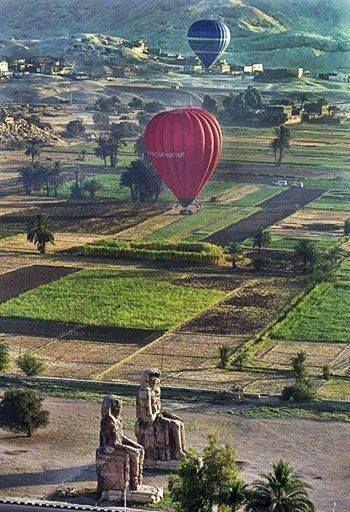
At the same time, Egypt was opened to the new social changes and intellectual movements that had been emerging in the East.
Saladin introduced into Egypt the madrasah, a mosque-college, which was the intellectual heart of the Sunni religious revival.
Even Al Azhar, founded by the Fatimids, became in time the center of Islamic orthodoxy.
In 1193 Saladin died peacefully in Damascus.
After his death, his dominions split up into a loose dynastic empire controlled by members of his family, the Ayyubids. Within this empire, the Ayyubid sultans of Egypt were paramount because their control of a rich, well-defined territory gave them a secure basis of power.
Economically, the Ayyubid period was one of growth and prosperity. Italian, French, and Catalan merchants operated in ports under Ayyubid control. Egyptian products, including alum, for which there was a great demand, were exported to Europe.
Egypt also profited from the transit trade from the East. Like the Fatimids before him, Saladin brought Yemen under his control, thus securing both ends of the Red Sea and an important commercial and strategic advantage.
Culturally, too, the Ayyubid period was one of great activity.
Egypt became a center of Arab scholarship and literature and, along with Syria, acquired a cultural primacy that it has retained through the modern period.
The prosperity of the cities, the patronage of the Ayyubid princes, and the Sunni revival made the Ayyubid period a cultural high point in Egyptian and Arab history.
The Mamluks, 1250-1517
To understand the history of Egypt during the later Middle Ages, it is necessary to consider two major events in the eastern Arab World: the migration of Turkish tribes during the Abbasid Caliphate and their eventual domination of it, and the Mongol invasion.
Turkish tribes began moving west from the Eurasian steppes in the sixth century.
As the Abbasid Empire weakened, Turkish tribes began to cross the frontier in search of pasturage.
The Turks converted to Islam within a few decades after entering the Middle East.Modern Egypt
The Turks also entered the Middle East as mamluks (slaves) employed in the armies of Arab rulers. Mamluks, although slaves, were usually paid, sometimes handsomely, for their services.
Indeed, a mamluk’s service as a soldier and member of an elite unit or as an imperial guard was an enviable first step in a career that opened to him the possibility of occupying the highest offices in the state.
Mamluk training was not restricted to military matters and often included languages and literary and administrative skills to enable the mamluks to occupy administrative posts.
In the late tenth century, a new wave of Turks entered the empire as free warriors and conquerors. One group occupied Baghdad, took control of the central government, and reduced the Abbasid caliphs to puppets.
The other moved west into Anatolia, which it conquered from a weakened Byzantine Empire.
The Mamluks had already established themselves in Egypt and were able to establish their own empire because the Mongols destroyed the Abbasid caliphate.
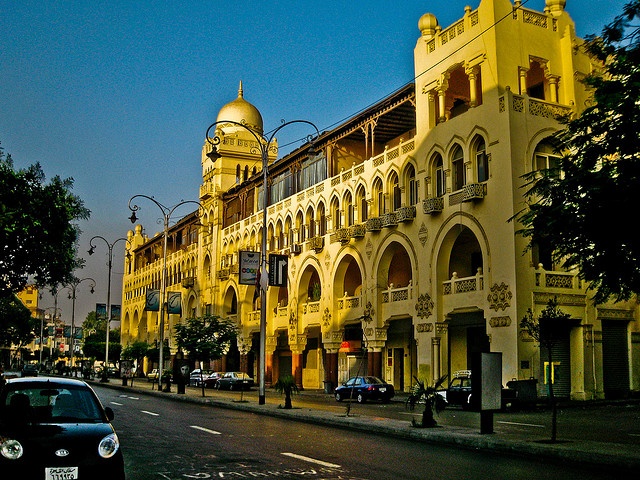
In 1258 the Mongol invaders put to death the last Abbasid caliph in Baghdad.
The following year, a Mongol army of as many as 120,000 men commanded by Hulagu Khan crossed the Euphrates and entered Syria.
Meanwhile, in Egypt the last Ayyubid sultan had died in 1250, and political control of the state had passed to the Mamluk guards whose generals seized the sultanate.
In 1258, soon after the news of the Mongol entry into Syria had reached Egypt, the Turkish Mamluk Qutuz declared himself sultan and organized the successful military resistance to the Mongol advance.
The decisive battle was fought in 1260 at Ayn Jalut in Palestine, where Qutuz’s forces defeated the Mongol army.
An important role in the fighting was played by Baybars I, who shortly afterwards assassinated Qutuz and was chosen sultan.
Baybars I (1260-77) was the real founder of the Mamluk Empire.
He came from the elite corps of Turkish Mamluks, the Bahriyyah, socalled because they were garrisoned on the island of Rawdah on the Nile River.
Baybars I established his rule firmly in Syria, forcing the Mongols back to their Iraqi territories.
At the end of the fourteenth century, power passed from the original Turkish elite, the Bahriyyah Mamluks, to Circassians, whom the Turkish Mamluk sultans had in their turn recruited as slave soldiers.
Between 1260 and 1517, Mamluk sultans of TurcoCircassian origin ruled an empire that stretched from Egypt to Syria and included the holy cities of Mecca and Medina.
As “shadow caliphs,” the Mamluk sultans organized the yearly pilgrimages to Mecca. Because of Mamluk power, the western Islamic world was shielded from the threat of the Mongols.
The great cities, especially Cairo, the Mamluk capital, grew in prestige.
By the fourteenth century, Cairo had become the preeminent religious center of the Muslim world.
Modern Egypt EGYPT UNDER THE OTTOMAN EMPIRE
In 1517 the Ottoman sultan Selim I (1512-20), known as Selim the Grim, conquered Egypt, defeating the Mamluk forces at Ar Raydaniyah, immediately outside Cairo.
The origins of the Ottoman Empire go back to the Turkish-speaking tribes who crossed the frontier into Arab lands beginning in the tenth century.
These Turkish tribes established themselves in Baghdad and Anatolia, but they were destroyed by the Mongols in the thirteenth century.
In the wake of the Mongol invasion, petty Turkish dynasties called amirates were formed in Anatolia.
The leader of one of those dynasties was Osman (1280-1324), the founder of the Ottoman Empire. In the thirteenth century, his amirate was one of many; by the sixteenth century, the amirate had become an empire, one of the largest and longest lived in world history.
By the fourteenth century, the Ottomans already had a substantial empire in Eastern Europe. Modern Egypt
In 1453 they conquered Constantinople, the Byzantine capital, which became the Ottoman capital and was renamed Istanbul. Between 1512 and 1520, the Ottomans added the Arab provinces, including Egypt, to their empire.
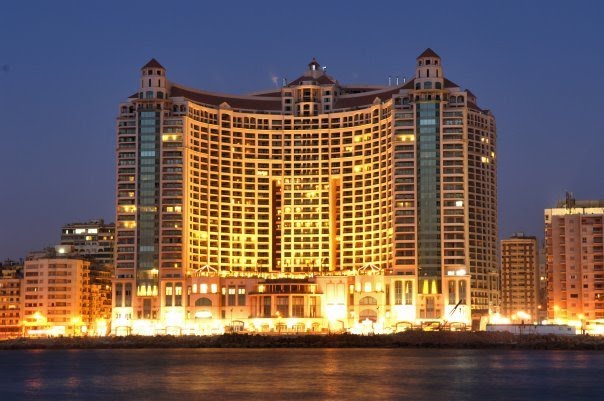
In Egypt the victorious Selim I left behind one of his most trusted collaborators, Khair Bey, as the ruler of Egypt. Khair Bey ruled as the sultan’s vassal, not as a provincial governor. He kept his court in the citadel, the ancient residence of the rulers of Egypt.
Although Selim I did away with the Mamluk sultanate, neither he nor his successors succeeded in extinguishing Mamluk power and influence in Egypt.
Only in the first century of Ottoman rule was the governor of Egypt able to perform his tasks without the interference of the Mamluk beys (bey was the highest rank among the Mamluks). During the latter decades of the sixteenth century and the early seventeenth century, a series of revolts by various elements of the garrison troops occurred.
During these years, there was also a revival within the Mamluk military structure.
By the middle of the seventeenth century, political supremacy had passed to the beys.
As the historian Daniel Crecelius has written, from that point on the history of Ottoman Egypt can be explained as the struggle between the Ottomans and the Mamluks for control of the administration and, hence, the revenues of Egypt, and the competition among rival Mamluk houses for control of the beylicate.
This struggle affected Egyptian history until the late eighteenth century when one Mamluk bey gained an unprecedented control over the military and political structures and ousted the Ottoman governor.


